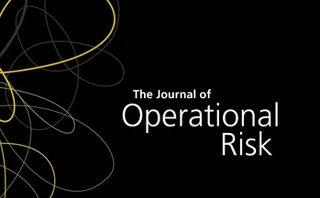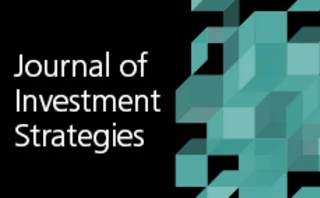Technical paper/Risk management
The impact of culture upon operational risk management guidelines in the banking sector of selected Asian countries
The central banks of different countries regulate ORM according to the specificities of their national banking industry. This paper tests the hypothesis that such regulatory openness results in legal texts that are highly influenced by the culture of the…
From use cases to a big data benchmarking framework in clearing houses and exchanges
In this paper, we propose a conceptual framework that links the technical and business benchmarks in the domain of clearing houses and securities exchanges.
Bank supervision: lessons from the post-2008 banking crisis
This paper considers the learning points from official third-party reports produced in the wake of supervisory failures that can be applied to the management of front-line bank supervisors.
Critical variables in the implementation of a risk-based internal audit: a theoretical and empirical investigation of Greek companies
This paper investigates the critical variables for the implementation of RBIA in Greek companies and examines the relationship between the above variables and RBIA implementation using data collected by 105 internal auditors, external auditors, directors…
Bias-corrected estimators for the Vasicek model: an application in risk measure estimation
The author evaluates the usefulness of bias-correction methods in enhancing the Vasicek model for market risk and counterparty risk management practices.
A framework to analyze the financial effects of climate change
Starting with an expert assessment of the climate risk factors over a specified horizon, then moving to a description of the expected number of climate events and the severity of the losses if an event occurs, the authors describe a framework to analyze…
Detection of financial fraud risk: implications for financial stability
This introduction to the Journal of Operational Risk special issue shines a light on the relationship between financial fraud risks and financial stability.
Body and tail: an automated tail-detecting procedure
The quality of a tail model, which is determined by data from an unknown distribution, depends critically on the subset of data used to model the tail. Based on a suitably weighted mean square error, the authors present a completely automated method that…
Ten laws of operational risk
This paper sets out ten laws that govern the behavior of operational risk relating to the occurrence and detection/duration of events; the rapidity with which firms suffer losses; the lags in crystallization of losses; and internal and external drivers…
Modeling loss given default regressions
The authors investigate the puzzle in the literature that various parametric loss given default (LGD) statistical models perform similarly, by comparing their performance in a simulation framework.
Client engineering of XVA
A client’s guide to reducing XVA in times of need
Supervisory bank risk early warning modeling: an examiner’s first line of defense
The results of this paper show that robust forward-looking statistical models are superior to backward-looking assessments of supervisory compliance, which could lead to less regulatory burden when integrated into the examination process, particularly at…
Evaluating cyclic risk propagation through an organization
Many large organizations have risk that propagates because of the dependencies between their various major organizational components. This paper addresses when cycles of dependencies exist in an organization or system of systems.
Concentration in cleared derivatives: the case for broadening access to direct central counterparty clearing
In this paper, the authors explore the benefits and challenges of encouraging major end-users of derivatives to become direct clearing members of central counterparties (CCPs).
The impact of corporate social and environmental performance on credit rating prediction: North America versus Europe
The authors quantify the extent to which the quality of credit rating predictions improves by integrating measures of corporate social performance (CSP) in an established credit risk model. Their analysis provides comprehensive evidence of the…
What is essential is invisible to the eye: prioritizing near misses to prevent future disasters
Near misses represent a primary information source to analyze the operational risk exposure of a company, since they can reveal gaps in the control environment. The model proposed in this paper aims at identifying the most dangerous events that could…
Strategic and technology risks: the case of Co-operative Bank
This paper studies the growth by acquisition strategy embarked upon by a mid-sized UK bank, the Co-operative Bank; this strategy was a disaster, leaving a heretofore successful bank in dire trouble and on the block for buyers at a substantial discount to…
An emergent taxonomy for operational risk: capturing the wisdom of crowds
In this paper, the author takes a data-driven approach and combines the individual active taxonomies of sixty large financial institutions (fifty-eight for construction and two for validation) to create a coherent new reference taxonomy: the ORX…
Art-secured lending: a risk analysis framework
In this study, the authors identify the three types of risks involved in an art-secured lending operation and present a framework to assess their combined effects via a Monte Carlo simulation.
Measuring economic cycles in data
This paper determines if enough data is available for forecasting or stress testing, a better measure of data length is required.
The pricing of firm-specific risk in emerging markets
This paper finds that a zero-investment strategy that goes long (short) in the highest (lowest) quintiles of firm-specific risk earns overall positive excess returns across twenty-one emerging markets.
An internal default risk model: simulation of default times and recovery rates within the new Fundamental Review of the Trading Book framework
This paper presents a new default risk model for market risk that is consistent with these requirements. The recovery rates follow a waterfall model that is based on a minimum entropy principle.
Hedging incentives for financial institutions
Using a simple model, this paper derives two results that provide guiding principles for hedging by, and capital regulation of, financial institutions.
Currency risk in foreign currency accounts for small and medium-sized businesses
This paper estimates the currency exposure before and after the hedging of active foreign currency (FC) accounts, using stochastic models for spot exchange rates and cashflow movements.



